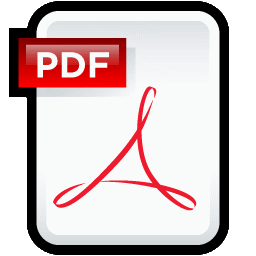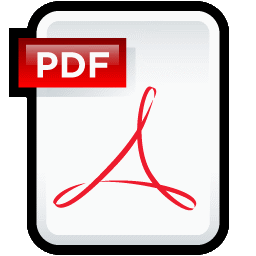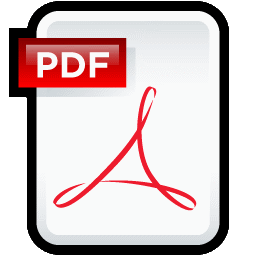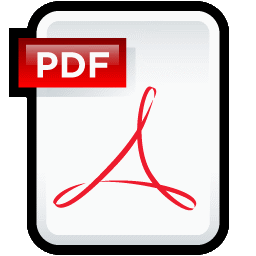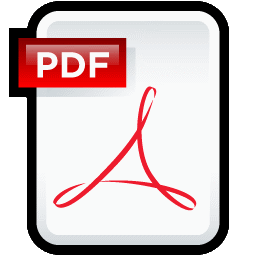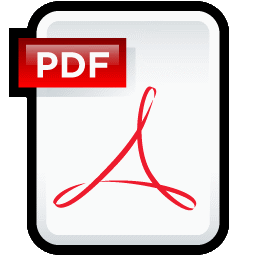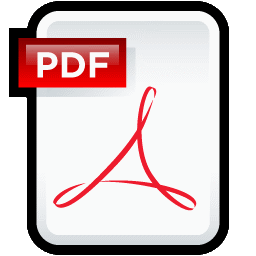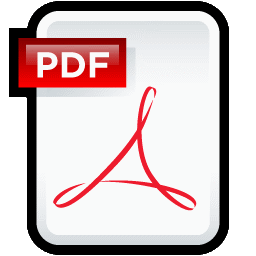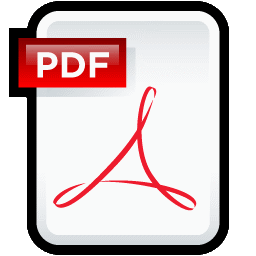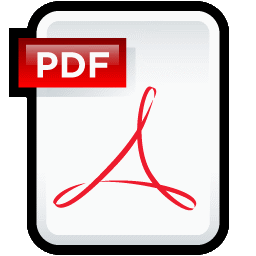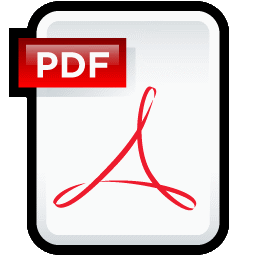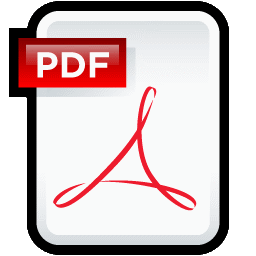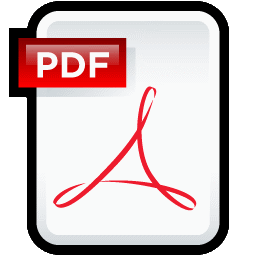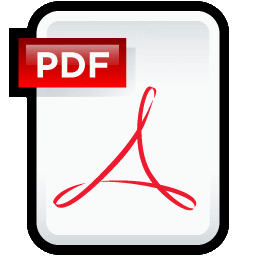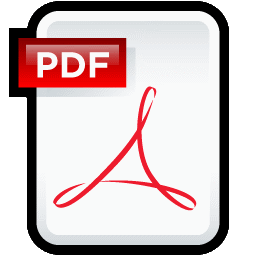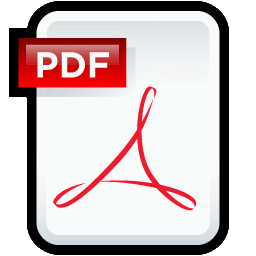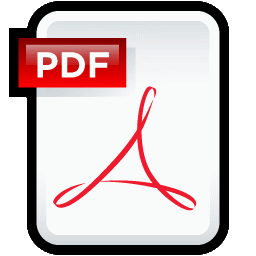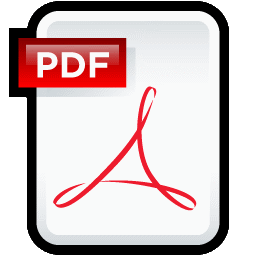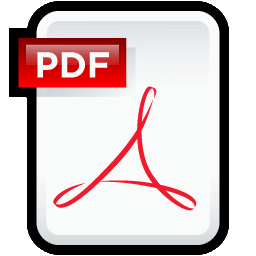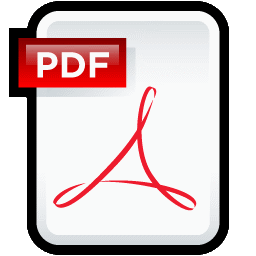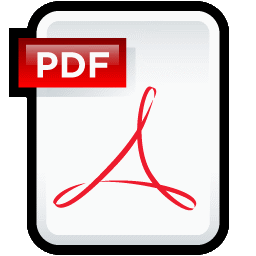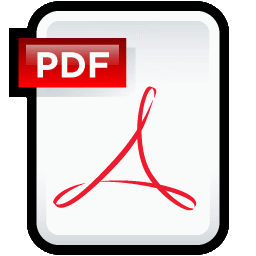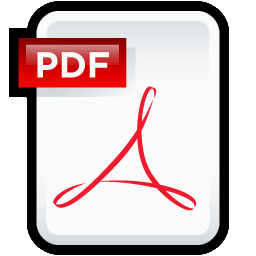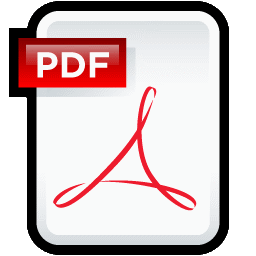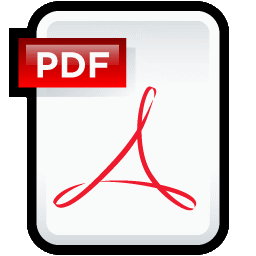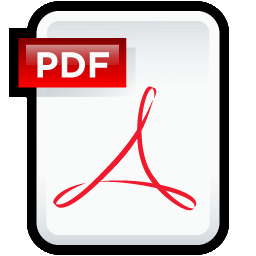FDA Blood Guidances
73 files
-
Revised Recommendations for Testing Whole Blood, Blood Components, Source Plasma and Source Leukocytes for Antibody to Hepatitis C Virus Encoded Antigen (Anti-HCV)
By Cliff
Docket Number: FDA-2013-S-0612 Issued by: Center for Biologics Evaluation and Research This memorandum transmits Revised Recommendations for Testing for Antibody to Hepatitis C Virus Encoded Antigen (Anti-HCV) in Blood Establishments, August, 1993. These revised recommendations modify those issued on April 23, 1992, in regard to testing for anti-HCV. A donor who currently tests, or who in the past had tested, repeatedly reactive for anti-HCV with a solid phase enzyme linked immunoassay (ELISA), licensed by the Food and Drug Administration (FDA), may now be considered for re-entry provided that certain criteria, described in this document, are fulfilled.
0 downloads
(0 reviews)0 comments
Submitted
-
Revised Recommendations Regarding Invalidation of Test Results of Licensed and 510(k) Cleared Bloodborne Pathogen Assays Used to Test Donors
By Cliff
Docket Number: 99D-2213 Issued by: Center for Biologics Evaluation and Research To reduce infectious disease transmission by blood and blood products, donor samples from blood donations are tested for markers of pathogenic bloodborne infections, including antibodies, antigens, and nucleic acids that may indicate the presence of etiologic agents such as human immunodeficiency virus (HIV), hepatitis B virus (HBV), hepatitis C virus (HCV), human T-cell lymphotropic virus (HTLV), cytomegalovirus (CMV), syphilis, and others. The validity of screening and supplemental (confirmatory) test assay results is determined by the performance of test kit manufacturer supplied reagents labeled as Acontrols@, used in accordance with the test kit instructions.
0 downloads
(0 reviews)0 comments
Submitted
-
Safety, Efficacy, and Pharmacokinetic Studies to Support Marketing of Immune Globulin Intravenous (Human) as Replacement Therapy for Primary Humoral Immunodeficiency
By Cliff
Docket Number: 2005D-0438 Issued by: Center for Biologics Evaluation and Research We, FDA, are providing you, Investigational New Drug Application (IND) sponsors and Biologics License Application (BLA) applicants, recommendations for testing the safety and efficacy of Immune Globulin Intravenous (Human) (IGIV) products as replacement therapy in primary humoral immunodeficiency. The document provides guidance on general principles concerning clinical trial design to evaluate safety, efficacy, and pharmacokinetics of investigational IGIV products and is intended to assist you in the preparation of the clinical/biostatistical and human pharmacokinetic sections of a BLA. This guidance does not address evidence of clinical efficacy for other indications, or other sections of a BLA such as chemistry, manufacturing, and controls and preclinical toxicology.
0 downloads
(0 reviews)0 comments
Submitted
-
Streamlining the Donor Interview Process: Recommendations for Self-Administered Questionnaires
By Cliff
Docket Number: 2002D-0080 Issued by: Center for Biologics Evaluation and Research Blood and plasma establishments (hereafter referred to as “blood establishments”) that collect blood and blood components intended for transfusion or for further manufacture may present donor screening questions to the donor by several methods. The blood establishment should choose the method that works best within its donor screening procedures. This guidance is intended for those blood establishments that wish to implement self-administered donor questionnaires, which allow donors to answer the pre-donation questions on their own; however, you (the blood establishment) may elect to continue to administer the donor questions by direct oral questioning. The guidance provides the recommendations of the Food and Drug Administration (FDA) for implementing self-administered donor questionnaires. In addition, the guidance describes the information the licensed blood establishments should include in a biologics license application supplement or annual report when they intend to implement self-administered questionnaires. This guidance finalizes the draft guidance of the same title dated April 2002. It also supersedes Section I.A of FDA’s memorandum dated April 23, 1992, entitled “Revised Recommendations for the Prevention of Human Immunodeficiency Virus (HIV) Transmission by Blood and Blood Products.”
0 downloads
(0 reviews)0 comments
Submitted
-
Testing for Biotin Interference in In Vitro Diagnostic Devices
By Cliff
Docket Number: FDA-2019-D-1876 Issued by: Center for Biologics Evaluation and Research Center for Devices and Radiological Health The Food the Drug Administration (FDA or we) is providing recommendations on the testing for interference by biotin on the performance of in vitro diagnostic devices (IVDs). This guidance is intended to help device developers and clinicians understand how FDA recommends biotin interference testing be performed, and how the results of the testing should be communicated to end-users, including clinical laboratories and clinicians. The recommendations apply to IVDs, including devices that are licensed under section 351 of the Public Health Service Act (42 U.S.C. 262) and used in donor screening, that use biotin technology. This guidance finalizes the draft guidance of the same title dated June 2019.
0 downloads
(0 reviews)0 comments
Submitted
-
United States Industry Consensus Standard for the Uniform Labeling of Blood and Blood Components Using ISBT 128
By Cliff
Docket Number: 98D-0965 Issued by: Center for Biologics Evaluation and Research The purpose of this document is to provide guidance on labeling requirements in the US for blood and blood components.
1 download
(0 reviews)0 comments
Submitted
-
Use of Nucleic Acid Tests on Pooled and Individual Samples From Donors of Whole Blood and Blood Components, Including Source Plasma, to Reduce the Risk of Transmission of Hepatitis B Virus
By Cliff
Docket Number: FDA-2011-D-0799 Issued by: Center for Biologics Evaluation and Research We, FDA, are providing you, blood establishments that collect Whole Blood and blood components for transfusion or for further manufacture, including recovered plasma, Source Plasma and Source Leukocytes, with recommendations concerning the use of FDA-licensed nucleic acid tests (NAT) to screen blood donors for hepatitis B virus (HBV) deoxyribonucleic acid (DNA). We are also providing you with recommendations for product testing and disposition, donor management, methods for donor requalification, and product labeling.
0 downloads
(0 reviews)0 comments
Submitted
-
Use of Nucleic Acid Tests to Reduce the Risk of Transmission of West Nile Virus from Donors of Whole Blood and Blood Components Intended for Transfusion
By Cliff
Docket Number: FDA-2008-D-0263 Issued by: Center for Biologics Evaluation and Research We, FDA, are issuing this guidance to provide you1 with recommendations for testing donations of Whole Blood and blood components for West Nile Virus (WNV) using an FDA-licensed donor screening assay2 . We believe that the use of a licensed nucleic acid test (NAT) will reduce the risk of transmission of WNV, and therefore recommend that you use a licensed to screen donors of Whole Blood and blood components intended for transfusion for infection with WNV.
0 downloads
(0 reviews)0 comments
Submitted
-
Use of Serological Tests to Reduce the Risk of Transfusion-Transmitted Human T-Lymphotropic Virus Types I and II (HTLV-I/II)
By Cliff
Docket Number: FDA-2018-D-3324 Issued by: Center for Biologics Evaluation and Research We, FDA, are providing you, blood collection establishments, with recommendations regarding the use of serological tests to reduce the risk of transmission of human T-lymphotropic virus type I (HTLV-I) and type II (HTLV-II), collectively referred to as HTLV-I/II, by blood and blood components. These recommendations apply to the collection of Whole blood and blood components, except Source Plasma.
0 downloads
(0 reviews)0 comments
Submitted
-
Use of Serological Tests to Reduce the Risk of Transmission of Trypanosoma cruzi Infection in Blood and Blood Components
By Cliff
Docket Number: FDA-2009-D-0137 Issued by: Center for Biologics Evaluation and Research We, FDA, are providing you, blood collection establishments, with recommendations regarding the use of serological tests to reduce the risk of transmission of Trypanosoma cruzi (T. cruzi) infection in blood and blood components. These recommendations apply to the collection of blood and blood components, except Source Plasma, for transfusion or for use in manufacturing a product, including donations intended as a component of, or used to manufacture, a medical device.
0 downloads
(0 reviews)0 comments
Submitted
-
Use of Sterile Connecting Devices in Blood Bank Practices
By Cliff
Docket Number: FDA-2022-D-0486 Issued by: Center for Biologics Evaluation and Research Sterile connecting devices produce sterile welds between two pieces of compatible tubing. This procedure permits sterile connection of a variety of containers and tube diameters. This guidance describes recommended practices and procedures for use of these devices. This guidance does not address the data or information that a manufacturer of a sterile connecting device must submit to FDA in order to obtain approval or clearance for marketing. It is also important to note that the use of an approved or cleared sterile connecting device for purposes not authorized in the labeling may cause the device to be considered adulterated and misbranded under the Federal Food, Drug and Cosmetic Act.
2 downloads
(0 reviews)0 comments
Submitted
-
Volume Limits for Automated Collection of Source Plasma
By Cliff
Docket Number: FDA-2013-S-0613 Issued by: Center for Biologics Evaluation and Research The increased number of automated plasma collection devices with varying capacities for tailoring each collection to the specific donor has resulted in the existence of multiple Food and Drug Administration (FDA) approved nomograms which specify, for each piece of equipment, the maximum volume of plasma to be harvested from each donor category. Current considerations in determining the volume of plasma to be collected include gender, height, weight, hematocrit, and in some centers, the length of time in process or the number of cycles. Because multiple equipment types commonly coexist in a location, the potential for error due to application of an inappropriate nomogram is significantly increased. The use of various anticoagulant solutions, differing concentrations of the anticoagulant, and a range of anticoagulant to plasma ratios, additionally complicates some schema and creates additional opportunity for error.
0 downloads
(0 reviews)0 comments
Submitted
-
“Computer Crossmatch” (Computerized Analysis of the Compatibility between the Donor’s Cell Type and the Recipient’s Serum or Plasma Type)
By Cliff
Docket Number: FDA-2007-D-0019 Issued by: Center for Biologics Evaluation and Research "Computer crossmatch" is a process used to ensure that blood released for transfusion is compatible with the intended recipient.1 We, FDA, are issuing this guidance to assist you, blood establishments that perform compatibility testing using a computer crossmatch system to perform computerized matching of blood, consistent with current good manufacturing practice (CGMP) requirements in 21 CFR Parts 210, 211 and 606. Blood establishments must have standard operating procedures (SOPs) "to demonstrate incompatibility between the donor’s cell type and the recipient’s serum or plasma type" under the compatibility testing requirements in 21 CFR 606.151(c). This guidance describes practices that we believe satisfy the requirements in 21 CFR 606.151(c) to help ensure detection of an incompatible crossmatch when using a computerized system for matching a donor’s cell type with a recipient’s serum or plasma type.
0 downloads
(0 reviews)0 comments
Submitted
-
Additional Recommendations for Donor Screening With a Licensed Test for HIV-1 Antigen
By Cliff
Docket Number: FDA-2022-D-0499 Issued by: Center for Biologics Evaluation and Research On August 8, 1995, FDA issued a memorandum to all registered blood and plasma establishments entitled, "Recommendations for Donor Screening with a Licensed Test for HIV-1 Antigen". This memorandum supplements that memorandum and provides additional recommendations regarding storage of samples for HIV-1 antigen testing as well as clarifications of the previous recommendations regarding specific implementation issues.
0 downloads
(0 reviews)0 comments
Submitted
-
Additional Recommendations for Testing Whole Blood, Blood Components, Source Plasma and Source Leukocytes for Antibody to Hepatitis C Virus Encoded Antigen (Anti-HCV)
By Cliff
Docket Number: FDA-2022-D-0498 Issued by: Center for Biologics Evaluation and Research On April 23, 1992, August 5, 1993, and August 19, 1993, FDA issued memoranda to all registered blood and plasma establishments, which provided recommendations for testing for antibody to Hepatitis C Virus Encoded Antigen (anti-HCV). This memorandum supplements those previous memoranda by transmitting additional recommendations for testing for antibody to anti-HCV in blood establishments. (See attached recommendations.)
In a public meeting of the Blood Products Advisory Committee (BPAC) on March 21, 1996, after review and discussion of the relevant information available, concern was expressed that the use of a supplemental test for anti-HCV that uses fewer antigens than the screening test for anti-HCV may cause uncertainties. In particular, the Committee discussed its concern that the use of the Chiron RIBA HCV 2.0 Immunoblot Assay (SIA) as a supplemental test for anti-HCV should not be used for donor re-entry if the Ortho™ HCV Version 3.0 ELISA Test System was used as a screening test. FDA has considered the BPAC concerns and sets forth in the attached recommendations donor re-entry and counseling procedures that should be used in this situation.
0 downloads
(0 reviews)0 comments
Submitted
-
Adequate and Appropriate Donor Screening Tests for Hepatitis B; Hepatitis B Surface Antigen (HBsAg) Assays Used to Test Donors of Whole Blood and Blood Components, Including Source Plasma and Source Leukocytes
By Cliff
Docket Number: 2002D-0081 Issued by: Center for Biologics Evaluation and Research Blood establishments are required under 21 CFR 610.40(a)(3) and (b) to test donations of human blood and blood components for hepatitis B virus using approved screening tests that are adequate and appropriate for this purpose. One test used to detect the presence of hepatitis B infection is the hepatitis B surface antigen (HBsAg) test.
0 downloads
(0 reviews)0 comments
Submitted
-
Plasma Derived from Therapeutic Plasma Exchange
By Cliff
Docket Number: FDA-2013-S-0613 Issued by: Center for Biologics Evaluation and Research In an April 1, 1983, Notice published in the Federal Register (Vol. 48, No. 64, page 14048), the Food and Drug Administration (FDA) advised that plasma derived from therapeutic exchange procedures is a biological product subject to the licensing provisions of the Public Health Service Act [42 USC 262 (a)] then collected and shipped for further manufacture into in vitro diagnostic products.
2 downloads
(0 reviews)0 comments
Submitted
-
Alternative Procedures for the Manufacture of Cold-Stored Platelets Intended for the Treatment of Active Bleeding when Conventional Platelets Are Not Available or Their Use Is Not Practical
By Cliff
Docket Number: FDA-2023-D-2034 Issued by: Center for Biologics Evaluation and Research FDA (we) is issuing this guidance to provide a notice of exceptions and alternatives to certain requirements in Title 21 of the Code of Federal Regulations (CFR) regarding blood and blood components. This notice is being issued under 21 CFR 640.120(b) to respond to a public health need and address the urgent and immediate need for platelets for the treatment of active bleeding when conventional platelets are not available, or their use is not practical. Maintaining platelet availability in the face of logistical challenges (e.g., in military, prehospital, or austere settings) or other threats to blood availability (e.g., mass casualty events or public health emergencies) is critical to assure that platelets are available to patients with active bleeding.
0 downloads
(0 reviews)0 comments
Submitted
-
An Acceptable Circular of Information for the Use of Human Blood and Blood Components
By Cliff
Docket Number: FDA-2002-D-0223 Issued by: Center for Biologics Evaluation and Research We, the Food and Drug Administration (FDA), Center for Biologics Evaluation and Research, are recognizing as acceptable for use by you, manufacturers of blood and blood components intended for transfusion, the document entitled “Circular of Information for the Use of Human Blood and Blood Components,” dated December 2021 (December 2021 Circular). The December 2021 Circular provides specific labeling instructions for the administration and use of blood and blood components intended for transfusion. We believe that the December 2021 Circular will assist you in complying with labeling requirements under 21 CFR 606.122. The requirements under 21 CFR 606.122 specify that a circular of information must be available for distribution with blood and blood components intended for transfusion. Section 606.122 further specifies the information that is required in the circular of information. This guidance supersedes the guidance of the same title updated December 2017
0 downloads
(0 reviews)0 comments
Submitted
-
Assessing Donor Suitability and Blood and Blood Product Safety in Cases of Known or Suspected West Nile Virus Infection
By Cliff
Docket Number: 2005D-0133 Issued by: Center for Biologics Evaluation and Research This guidance document finalizes the draft “Guidance for Industry: Assessing Donor Suitability and Blood and Blood Product Safety in Cases of Known or Suspected West Nile Virus Infection,” dated April 2005, and provides revisions to our previously published final guidance entitled “Guidance for Industry: Revised Recommendations for the Assessment of Donor Suitability and Blood and Blood Product Safety in Cases of Known or Suspected West Nile Virus Infection,” dated May 2003. We, FDA, recommend that these revised recommendations be applied prospectively, i.e., that actions taken under previous guidance do not need to be reconsidered subject to the additional provisions of this guidance. This guidance revises the final May 2003 West Nile Virus (WNV) guidance to add a recommendation to defer donors suspected of having WNV infection or diagnosed with WNV infection for 120 days after diagnosis or onset of illness, whichever is later.
0 downloads
(0 reviews)0 comments
Submitted
-
Availability of FDA’s eSubmitter Program for Regulatory Submissions from Licensed Blood Establishments
By Cliff
Docket Number: FDA-2011-D-0579 Issued by: Center for Biologics Evaluation and Research We, FDA, the Center for Biologics Evaluation and Research (CBER), are announcing to you, licensed blood establishments that collect Whole Blood and blood components, including Source Plasma, the availability of CBER’s eSubmitter Program (eSubmitter), an electronic submissions program. The eSubmitter program is intended to facilitate submission and processing of regulatory filings, including biologics license applications (BLAs), BLA supplements (BLSs), annual reports and amendments to pending eSubmitter applications and supplements. In this guidance, we describe how you may obtain and use the eSubmitter program.
0 downloads
(0 reviews)0 comments
Submitted
-
Bacterial Risk Control Strategies for Blood Collection Establishments and Transfusion Services to Enhance the Safety and Availability of Platelets for Transfusion
By Cliff
Docket Number: FDA-2014-D-1814 Issued by: Center for Biologics Evaluation and Research We, FDA, are issuing this guidance document to provide you, blood collection establishments and transfusion services, with recommendations to control the risk of bacterial contamination of room temperature stored platelets intended for transfusion. The recommendations in this guidance apply to all platelet products stored at room temperature in plasma or additive solutions, including platelets manufactured by automated methods (apheresis platelets), and Whole Blood derived (WBD) single and pooled (pre-storage and post-storage) platelets.
Additionally, this guidance provides licensed blood establishments with recommendations on how to report implementation of manufacturing and labeling changes under Title 21 of the Code of Federal Regulations (CFR) 601.12.
This guidance updates the final guidance of the same title dated September 2019. The September 2019 guidance finalized the draft guidance of the same title dated December 2018.
0 downloads
(0 reviews)0 comments
Submitted
-
Biological Product Deviation Reporting for Blood and Plasma Establishments
By Cliff
Docket Number: FDA-2001-D-0007 Issued by: Center for Biologics Evaluation and Research We, FDA, are providing you, a blood or plasma establishment, with revised recommendations related to biological product deviation (BPD) reporting. This guidance document is intended to assist blood and plasma establishments in determining when a report is required, who submits the report, what information to submit in the report, the timeframe for reporting, and how to submit the report. The revised guidance explains that we do not consider post donation information (PDI) events to require BPD reports.
0 downloads
(0 reviews)0 comments
Submitted
-
Blood Establishment Computer System Validation in the User's Facility
By Cliff
(This guidance finalizes the draft guidance entitled “Guidance for Industry: Blood Establishment Computer System Validation in the User’s Facility” dated October 2007) - 4/2013 Docket Number: FDA-2007-D-0069 Issued by: Center for Biologics Evaluation and Research We, FDA, are issuing this guidance to assist you, blood establishments, in developing a blood establishment computer system validation program, consistent with recognized principles of software validation, quality assurance, and current good software engineering practices. This guidance addresses a blood establishment's validation of its Blood Establishment Computer System (system) which incorporates Blood Establishment Computer Software (BECS). In the context of this guidance, the term user's facility means the blood establishment.
0 downloads
(0 reviews)0 comments
Submitted
-
Blood Pressure and Pulse Donor Eligibility Requirements – Compliance Policy
By Cliff
Docket Number: FDA-2002-D-0362 Issued by: Center for Biologics Evaluation and Research This guidance addresses the regulatory requirements for determining donor eligibility that apply to establishments that collect blood and blood components (blood establishments) for transfusion or for further manufacturing use, including Source Plasma. In the final rule dated May 22, 2015 (Requirements for Blood and Blood Components Intended for Transfusion or for Further Manufacturing Use (donor eligibility rule)) (Ref. 1), FDA (we) amended the regulations applicable to blood establishments for determining donor eligibility and testing blood and blood components. The revised requirements were implemented in order to assure the safety of the blood supply and to protect donor health. The donor eligibility rule became effective on May 23, 2016.
1 download
(0 reviews)0 comments
Submitted
